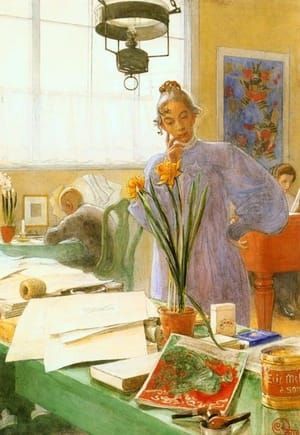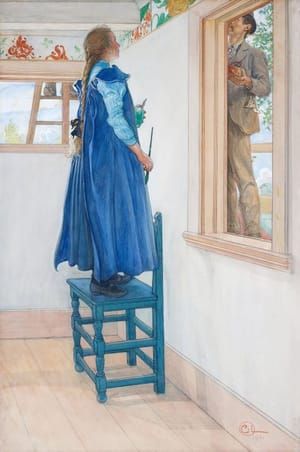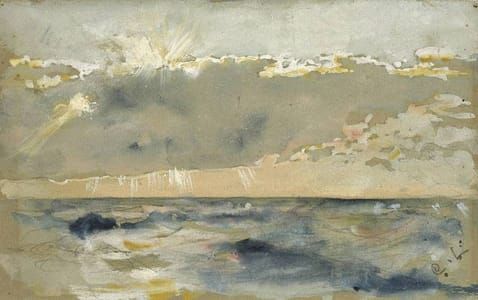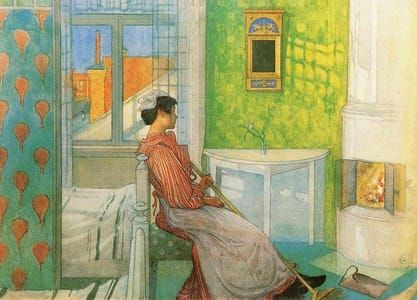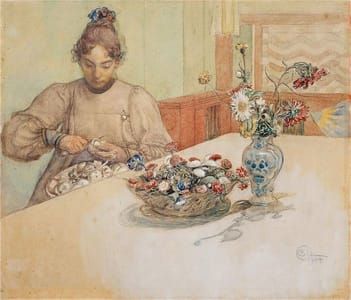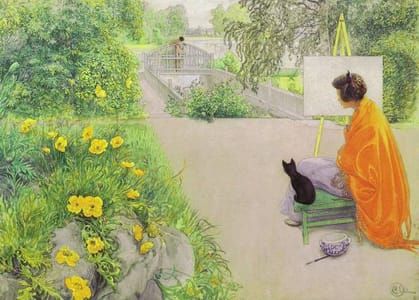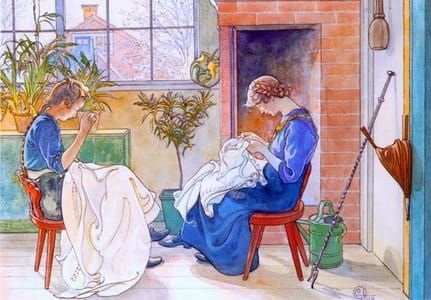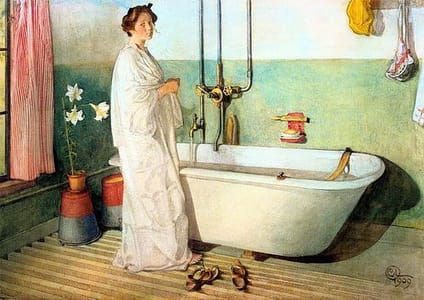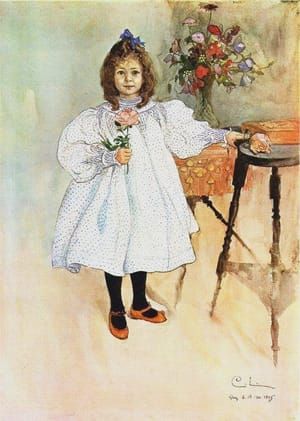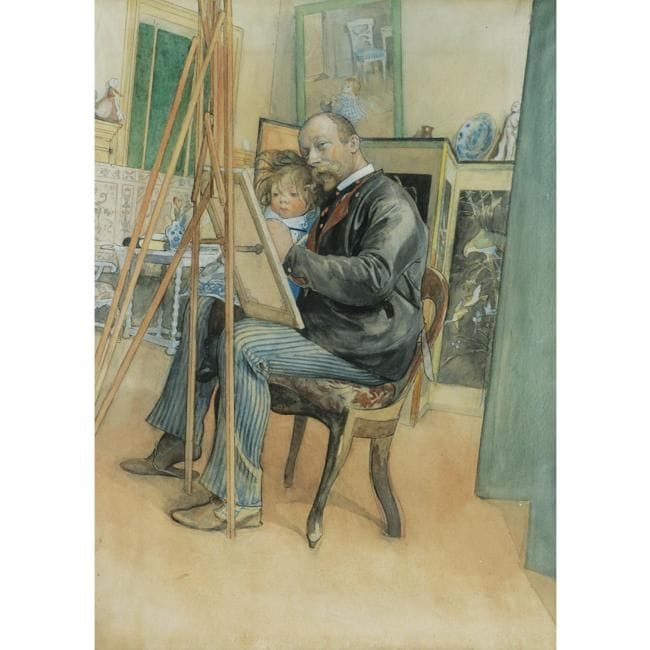

Spegelbild med Brita (Mirror-image with Brita), 1895
Carl Larsson
Dressed not in his painter's smock but in pinstriped trousers, jacket, wing collar and tie, Larsson appears in the present work in a relaxed and jocular mood. With a paternal twinkle in his eye he holds his fifth child Brita on his knee and steadies a stretcher on his thigh as he captures the informal scene of domestic happiness that is reflected in a mirror before him.
Sitting in the studio at Lilla Hyttnäs, the Larsson's summer house at Sundborn in the middle of Sweden, but blithely ignoring the paraphernalia that tilts and crowds around them, father and daughter focus intently on the matter in hand - the execution of their double portrait. The effect is the creation of a world within a world and the realization for the viewer that the image that we are in fact looking at is the painting propped on Larsson's knee.
Elsewhere in the room jostle elements of Larsson's personal and professional life. Hanging on the wall in the background is his portrait of his second son Pontus painted in 1890; below it the family's distinctive chinoiserie screen decorated with birds; nestling on ledges and displayed on the side table are ornaments and accoutrements that recur again and again in his compositions: the blue and white flower vase half obscured behind the struts of the easel to the left, and the Delft plate above the folding screen on the right. Punch and Judy-like in pose, the semi-burlesque miniature figures to either side of the composition offer a rye tongue-in-cheek allusion to the alter-egos of he and his wife Karin, while the two enormous canvas-covered 'flats' running down the right side of the picture suggest his professional pre-occupation of the day: his work on the huge mural designs for the Nationalmuseum in Stockholm.
Brita appears with Larsson in only a handful of other self portraits, all executed in the mid-1890s. These include two watercolors, two drawings and an etching. Only one, however, is of comparable quality: Brita and I painted in the same year as the present work and now in the Konstmuseum, Gothenburg.
The frame for the present work was designed specifically for the picture by Larsson and very likely made by carpenter Hans Arnbom. Arnbom, the village handyman, was the most important of a number of local craftsmen who helped the Larssons realise their ideal at Lilla Hyttnäs, extending and renovating the property, making furniture to Karin Larsson's designs, and constructing Carl's distinctive hand carved frames.
(http://www.sothebys.com/en/auctions/ecatalogue/2009/19th-century-european-paintings-including-spanish-painting-the-orientalist-sale-and-german-austrian-scandinavian-and-symbolist-works-l09663/lot.67.html)
Uploaded on Feb 16, 2017 by Suzan Hamer
Carl Larsson
artistArthur
coming soon

